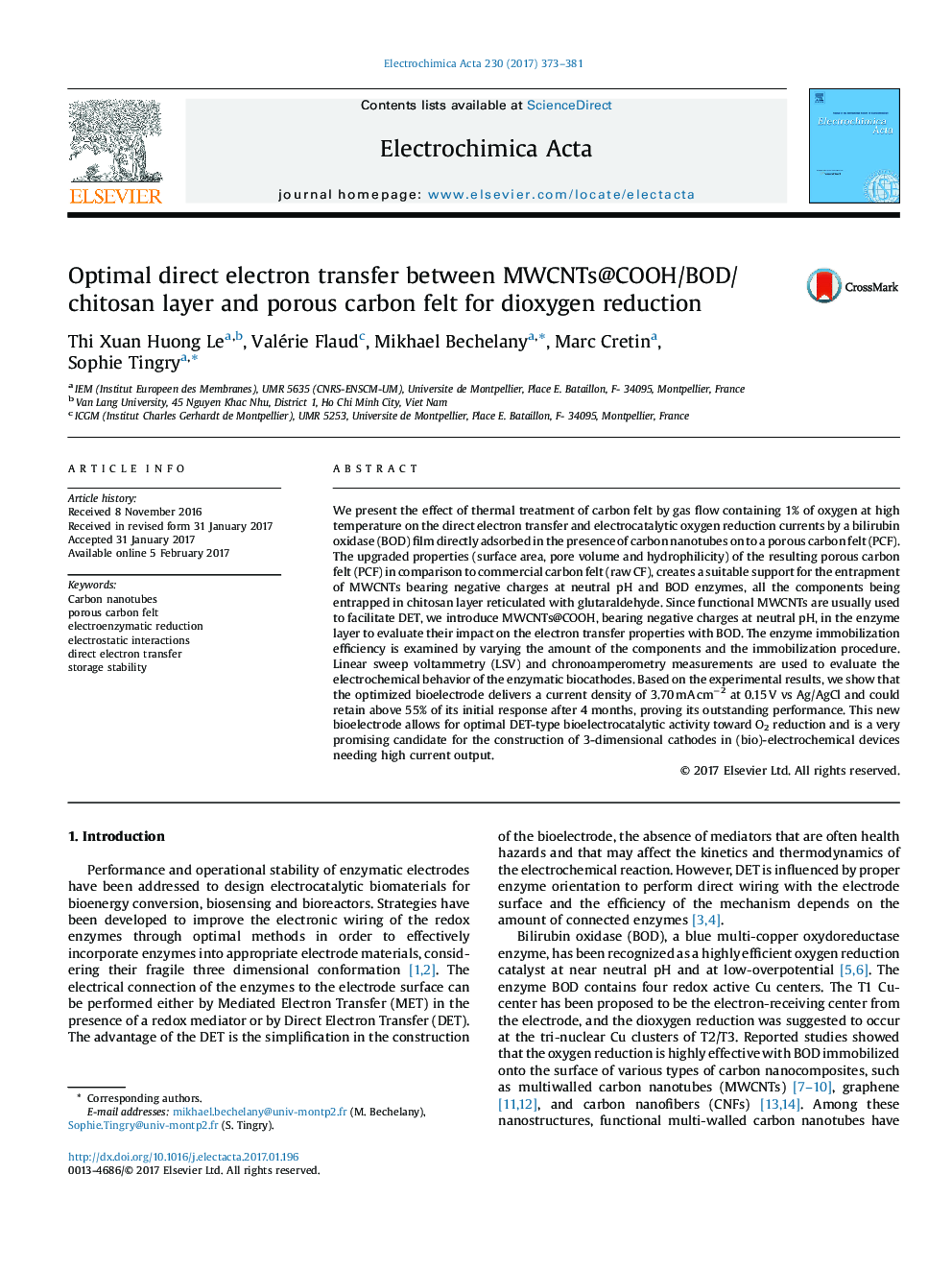| کد مقاله | کد نشریه | سال انتشار | مقاله انگلیسی | نسخه تمام متن |
|---|---|---|---|---|
| 6471409 | 1424127 | 2017 | 9 صفحه PDF | دانلود رایگان |

- Bilirubin oxidase (BOD) is adsorbed on to a porous carbon felt in the presence of carbon nanotubes.
- The direct electron transfer and electrocatalytic oxygen reduction currents were evaluated.
- The optimized bioelectrode delivers a current density of 3.70Â mAÂ cmâ2 at 0.15Â V vs Ag/AgCl.
- The bioelectrode could retain above 55% of its initial response after 4 months.
- This bioelectrode allows for optimal DET-type bioelectrocatalytic activity toward O2 reduction.
We present the effect of thermal treatment of carbon felt by gas flow containing 1% of oxygen at high temperature on the direct electron transfer and electrocatalytic oxygen reduction currents by a bilirubin oxidase (BOD) film directly adsorbed in the presence of carbon nanotubes on to a porous carbon felt (PCF). The upgraded properties (surface area, pore volume and hydrophilicity) of the resulting porous carbon felt (PCF) in comparison to commercial carbon felt (raw CF), creates a suitable support for the entrapment of MWCNTs bearing negative charges at neutral pH and BOD enzymes, all the components being entrapped in chitosan layer reticulated with glutaraldehyde. Since functional MWCNTs are usually used to facilitate DET, we introduce MWCNTs@COOH, bearing negative charges at neutral pH, in the enzyme layer to evaluate their impact on the electron transfer properties with BOD. The enzyme immobilization efficiency is examined by varying the amount of the components and the immobilization procedure. Linear sweep voltammetry (LSV) and chronoamperometry measurements are used to evaluate the electrochemical behavior of the enzymatic biocathodes. Based on the experimental results, we show that the optimized bioelectrode delivers a current density of 3.70Â mAÂ cmâ2 at 0.15Â V vs Ag/AgCl and could retain above 55% of its initial response after 4 months, proving its outstanding performance. This new bioelectrode allows for optimal DET-type bioelectrocatalytic activity toward O2 reduction and is a very promising candidate for the construction of 3-dimensional cathodes in (bio)-electrochemical devices needing high current output.
Journal: Electrochimica Acta - Volume 230, 10 March 2017, Pages 373-381